7 Ways to Use ClickUp
The cloud service for project management and team collaboration ClickUp was launched in 2017 as a small startup project, and by 2022, it became one of the most popular platforms for increasing productivity. Its main advantages are considered to be functionality and versatility: it provides users with many tools not only for collaborative but also for individual work. From our article, you will learn what this platform is, its features and advantages, and how to use ClickUp for different purposes, tasks, and areas of activity.
What is ClickUp?
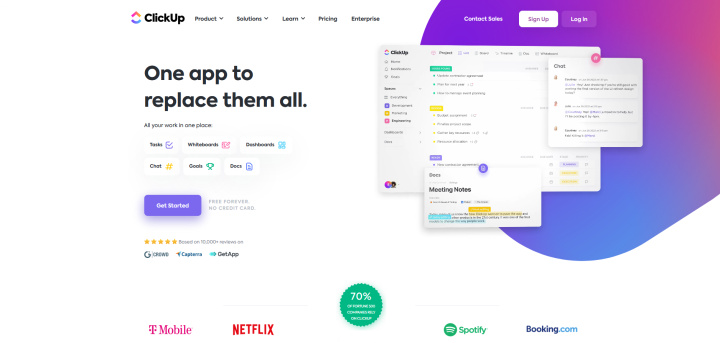
The developers called their project a «unified platform for increasing productivity», implying the presence of extensive functionality for creating projects and tasks and managing them. The service interface combines dozens of various tools. This allows it to successfully replace a number of third-party applications. ClickUp is considered an effective alternative to platforms such as Monday, Asana, Jira, Trello, Airtable, Notion, BaseCamp, Wrike, and similar ones. In addition to managing tasks and subtasks, the service also has a range of other options: goals, documents, chats, reports, email, calendar, templates, checklists, integrations, and so on.
Let's take a closer look at the key features of ClickUp:
- At the core of the interface is the workspace (Space), where you can track and manage all company, department, or project activity. Each space has its own settings and user list. Below are folders (e.g., for different projects or departments) with task lists, checklists, and subtasks ClickUp. The service allows for flexible customization of tasks and other content: assigning performers and deadlines, marking them with colors and tags, adding links/images/videos/documents, visualizing data through graphs and diagrams, discussing in chat, and so on.
- The document editor allows you to create and modify documentation of different types, particularly wiki documents (roadmaps, knowledge bases, etc.), and integrate them into work processes.
- Dashboards provide the ability to control collaborative work results and flexibly manage them. This section includes popular tools such as developer sprints, resource management options, business management, and more than 50 widgets.
- Whiteboards help visualize collaboration processes for participants in different projects. They have tools for teamwork (e.g., brainstorming), task/file/document management. There is also a built-in graphic editor and ClickUp notepad, which are useful for creating and editing text notes.
- With measurable goals, users can track progress, results, speed, and other project performance indicators. The service offers different formats to choose from: progress visualization as a percentage, goal-tasks, numeric goals, monetary goals, true/false goals, goal descriptions, and more.
- An extensive catalog of project and task templates is convenient as they are distributed by thematic categories: design and creative, production and engineering, finance and accounting, marketing, HR, IT, sales. By the way, the service allows you to quickly and easily find a specific task or subtask using ClickUp tags.
- The presence of built-in integrations with more than 1000 third-party services and applications gives users the opportunity to expand the platform's standard functionality. The most popular among them are: Slack, GitHub, GitLab, HubSpot, Outlook, Zoom, Google Calendar, Microsoft Teams. In addition, the platform can be integrated with virtually any existing software independently through the API.
- ClickUp mind map is another useful feature. It helps effectively plan and visualize ideas, projects, or assigned tasks. For example, you can create a structure of all tasks, indicating the connections between them, and add/edit or delete tasks directly in the ClickUp mind map. The completed map can easily be shared with other project participants for discussion and collaborative work on it.
In the following sections, we will tell you for which areas and how to use this service.
Project Management
Project management is one of the priority areas for using ClickUp. The platform provides an impressive number of tools for planning and organizing projects, tracking overall progress and achieving set goals, as well as teamwork. In addition, the service's functionality includes a variety of formats for structuring projects and resources used in them: lists, tables, Gantt charts, Kanban boards, calendar, and more than 10 customizable formats.
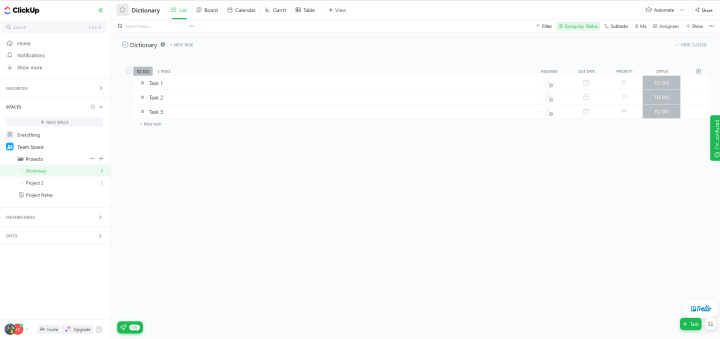
ClickUp users can quickly and conveniently interact with each other during work. The interface allows you to leave comments for any task or document, discuss projects and tasks in the built-in chat, attach files, and promptly receive notifications about new comments or any changes.
The functional dashboard is another significant advantage of this service for project management. It helps to gather all essential indicators and metrics in one place: add various widgets for team members, tasks, sprints, time tracking, statuses, documents, and so on.
Remote Work
It is worth noting the capabilities of ClickUp for personal use. Although it is most often used for remote work or business, the service is equally effective for managing personal productivity. Individual users have access to the same options as teams or companies: tasks, documents, goals, mailbox, dashboards, different data display formats.

The platform is absolutely universal and suitable for different types of remote work. With its help, users can track the progress of their work duties, monitor their own or others' work online, manage workload through sprints and backlogs, discuss tasks and projects with colleagues or employers, set priorities, and so on.
Since it is a cloud-based platform, it can be used from any computer without installing any software. The availability of a ClickUp extension for the Google Chrome web browser makes it even more convenient for remote work. It has options for creating tasks, saving a site to bookmarks, time tracking, creating a screenshot, viewing mail, and sending a task in a letter, as well as working in a notepad. The built-in integration with Zoom and many other systems is equally useful.
CRM
Customer relationship management is another popular use case for ClickUp. The service allows you to quickly and effectively organize these processes using tracking, data visualization, email processing, and other tools. Users have access to more than 10 formats for displaying the client base with flexible customization options: from simple lists and tables to Kanban boards. Similarly, you can fine-tune other important CRM parameters, from order systems to sales funnels.


In addition, ClickUp provides tools for diverse analysis of customer data and their purchases using more than 50 metrics in the dashboard. For example, you can calculate the customer lifetime value (LTV), average order value (AOV), and other important figures.
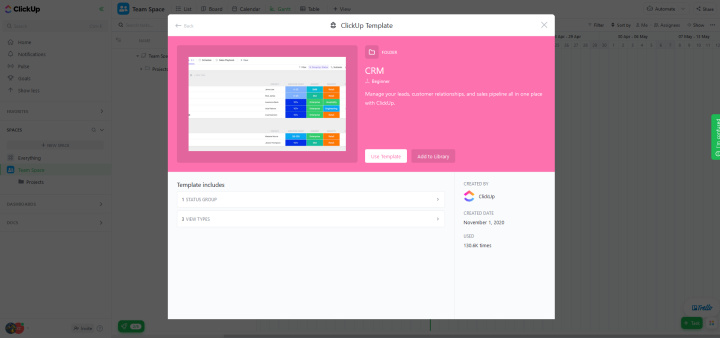
ClickUp supports integration with many popular email providers and mailing services. This helps businesses conveniently track communication with their customers and manage it across different channels in a unified mail hub. The service also has functionality for automating sales funnels, onboarding clients, and many CRM templates for various industries (real estate, HR, healthcare, accounting, and so on).
Event Organization
ClickUp tools allow organizing and coordinating events of different themes, types, and scales. Users can keep detailed records of any number of events using a convenient and functional built-in calendar. For example, building a timeline, delegating tasks and responsibilities, interacting with clients, partners, and contractors directly within the service interface. The two-way integration with Google Calendar significantly expands its standard capabilities.

One of the most useful features for the event industry is time management, allowing precise calculation and control of various time parameters in automatic mode. Moreover, with ClickUp, you can create orders and assignments for team members or external contractors and manage them. Additionally, using checklists and a task priority system, you will enhance the effectiveness of this tool.
Another convenient feature provided by the service is creating separate groups for each event. You can add participants, assign them roles, and promptly communicate with them through chat and comments.
Business Management
ClickUp is suitable not only for hired professionals but also for entrepreneurs and managers from various business sectors. Its universal tools effectively help solve operational management tasks. The service allows you to create various business processes and flexibly manage them to optimize daily routine and free up time for essential tasks.

Moreover, ClickUp has a set of tools for managing financial and administrative aspects of a business. With its help, entrepreneurs can control inventory, equipment, employee salary payments, and other serious aspects of commercial activity. The service allows you to schedule these tasks in a calendar, receive reminders of necessary actions, and automate routine processes.
Another useful feature for entrepreneurs in ClickUp is creating and editing documents through the built-in editor. The service enables you to compile various types of documentation (financial, marketing, and others) and involve other users for collaboration.
Website Administration
The service's tools allow for flexible coordination of all work processes related to the web. Using ClickUp, users can plan and add diverse content to their websites and update it through a single control panel. For example, managing tasks through lists, building workflows on boards, scheduling actions and events through a calendar or Gantt charts.
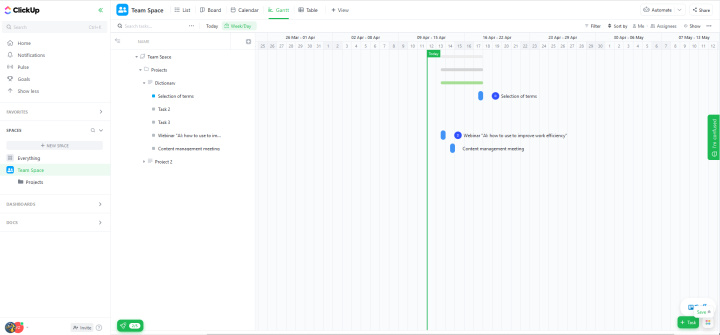
Equally useful is the built-in ClickUp Docs editor. It is ideally suited for developing and modifying web design. Here, you can write comments on code, import design files from Figma or Invision, create group chats for different projects, attach files to tasks, and share them with the team. The catalog includes ready-made templates for individual web pages, single-page sites, graphic design, and other content.
Education
Another relevant way, how to use ClickUp is in education. The tools of this platform are useful for all participants in the educational process: students, teachers, and administrators. The service allows you to create an unlimited number of courses, fill them with content, create schedules, add tasks, and manage them through the drag-and-drop editor (organize by priority, change dates, statuses, etc.)
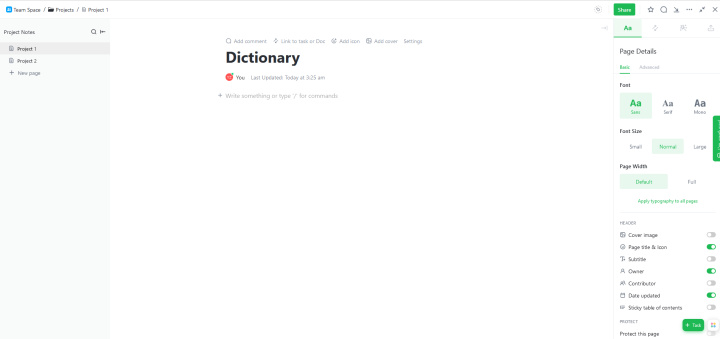
Among other features of the service for education, it is worth mentioning the already familiar Docs function. It helps to create drafts of assignments and projects using notes, organize work by linking tasks with documents, and embed resources from external sources for quick access.
Final Thoughts
ClickUp is a universal and functional service that can be used for both team collaboration and individual tasks. It allows you to create workspaces for various projects, add sections of tasks, subtasks, checklists, and provides extensive possibilities for editing and managing them. ClickUp offers over 10 different content display formats, from simple lists to Kanban boards and Gantt charts. Among other useful tools of the platform are the Docs module, relationship maps, tags, whiteboards, project and task templates, and numerous integrations.
Do you want to achieve your goals in business, career and life faster and better? Do it with ApiX-Drive – a tool that will remove a significant part of the routine from workflows and free up additional time to achieve your goals. Test the capabilities of Apix-Drive for free – see for yourself the effectiveness of the tool.

